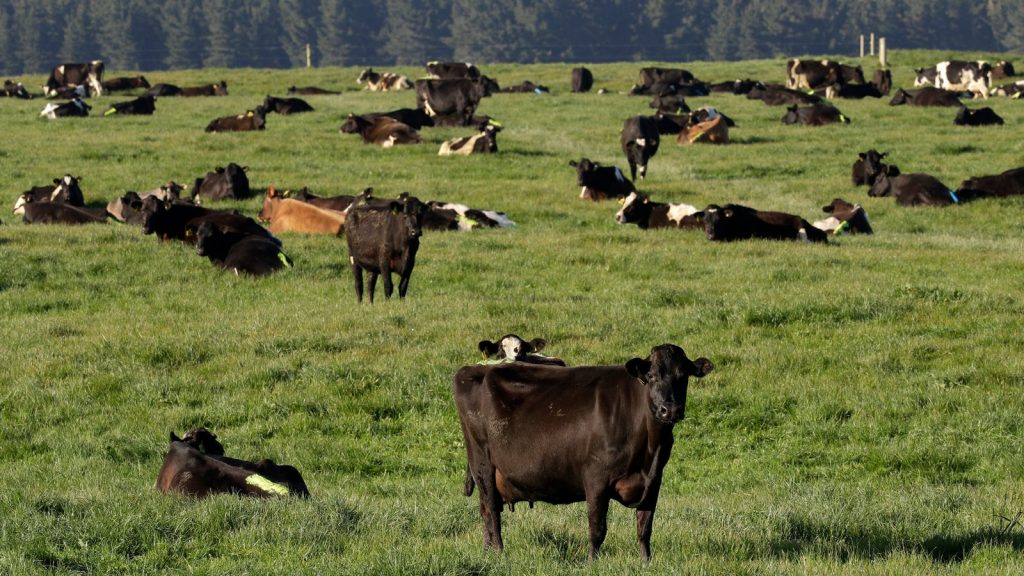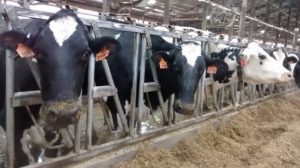
The Agriculture Department announced the June Federal order Class III milk price at $17.21 per hundredweight (cwt.), down $1.75 from May and $3.83 below last year’s COVID-driven benchmark. The six-month Class III average is at $16.96, up from $16.09 at this time a year ago and $15.25 in 2019.
Friday’s Class III settlements showed a July price of $16.79; August, $16.71; September, $17.28; October, $18.11; November, $18.24; and December $18.01.
The Class IV price is $16.35, up 19 cents from May, $3.45 above a year ago, and the highest Class IV price since January 2020. The Class IV average stands at $14.84, up from $13.78 a year ago, and compares to $15.98 in 2019.
It’s been a roller coaster ride that started last year with the COVID pandemic which resulted in milk prices plunging to levels not seen since 2009 and then soaring to levels last seen in 2014. But many dairy farmers did not fare well even when the prices shot higher, due to the quirks of milk pricing in this country in the form of cooperatives de-pooling milk and large Class I differentials.
Adding insult to injury, dairy farmers have seen large price hikes in feed costs, much of it driven by exports of corn and soybeans to China. This week’s much anticipated Grain Stocks and Acreage reports didn’t help matters any. June 1 corn stocks were down 18% from June 2020 and soybean stocks were down 44%.
Planted acreage to corn was only up 2% from a year ago and soybean acreage was up just 5%, well below expectations, according to Chicago-based HighGround Dairy’s Lucas Fuess.
Speaking in the July 5 Dairy Radio Now broadcast, Fuess said the lower stocks implies strong demand over the past few months, but both reports do not bow well for feed prices which peaked in early May and June. Extremely dry weather has also impacted current crops in some of the key growing regions of the country.
Dairy farmers are watching this closely, Fuess said, as feed costs are expected to be the highest in years and perhaps even a decade. That could result in drops in escalating milk output, particularly in the western states, and stop the U.S. herd from growing after topping last year’s herd by an incredible 145,000 head.
The continued rising feed prices could not be offset by the higher all milk price in May, so the slide in the U.S. milk feed ratio resumed after pausing in April. The USDA’s latest Ag Prices report showed the May ratio at 1.69, down from 1.75 in April, and compares to 1.78 in May 2020.
The index is based on the current milk price in relationship to feed prices for a ration consisting of 51% corn, 8% soybeans and 41% alfalfa hay. In other words, one pound of milk would only purchase 1.69 pounds of dairy feed of that blend.
The U.S. all milk price averaged $19.20 per cwt., up 80 cents from April and $5.50 above the May 2020 average. California’s all milk price climbed to $19.30 per cwt., up 80 cents from April and $6.10 above a year ago. Wisconsin’s, at $19.70, was up 90 cents from April and $6 above a year ago.
The national average corn price hit $5.91 per bushel, up 60 cents per bushel from April, after jumping 42 cents the previous month, and is a budget busting $2.71 per bushel above May 2020.
Soybeans averaged $14.80 per bushel, up 90 cents from April, following a 70 cent rise a month ago, and is a whopping $6.52 per bushel above May 2020.
Alfalfa hay averaged $194 per ton, up $7 from April and $15 above a year ago.
Looking at the cow side of the ledger; the May cull price for beef and dairy combined averaged $70.80 per cwt., down 30 cents from April, $2.50 above May 2020, but 80 cents below the 2011 base average of $71.60 per cwt.
Record breaking blistering heat pounded the Pacific Northwest and lower mainland of British Columbia, Canada early this week. Temperatures soared well over 100 degrees, a rare sight in this part of the USA, and termed a ‘heat dome’ seen once every 1,000 years. Sections of Washington State highways even buckled, including one just a few miles from my home. The heat extended into Oregon and California and was drawing much attention as to what its effects will be on the dairy industry and many others.
Dairy prices ended June and entered the July 4 holiday weekend a bit mixed, as traders anticipated Friday afternoon’s May Dairy Products report and Tuesday morning’s Global Dairy Trade auction.
The Cheddar blocks closed Friday at $1.5550 per pound, up 6.50 cents on the week, highest since May 27, but $1.12 below a year ago. The barrels finished at $1.50 per pound, up a penny, 91.50 cents below a year ago, and 5.50 cents below the blocks. 2 cars of block were sold on the week and 17 of barrel.
Cheese production remains busy in the Midwest, according to Dairy Market News. Inventory growth is a concern but, given the amount of milk being produced, cheesemakers have no other option than to take advantage of the $6 under Class III discounts. Cheese sales remain mixed but steady.
Cheese demand in the west was higher this week as contacts reported increased purchasing leading up to the holiday. Export demand is strong as the lower prices are favorable to international purchasers, but market tones are steady to firming. Cheese producers are running full schedules, as milk is readily available. A shortage of truck drivers and port congestion however continues to cause delays to loads in the region, says DMN.
Cash butter started the week strong, jumping a nickel, a likely response to the reports of the heat in the west, but it closed Friday at $1.74, up 2.25 cents on the week and 0.25 cents above a year ago, with 26 sales reported for the week.
Midwest butter makers were finding cream at pre-holiday bargains, reports DMN, and showed a spike in availability as the weekend approached. Butter demand has seemingly taken a holiday, says DMN, and producers relay that buyers’ interests edged lower this week.
Cream supplies were steady in the west despite the high temperatures, but most was staying relatively local as tanker shortages continue to curtail movement. The record-setting heat caused some butter makers to run shortened schedules. Inventories are fairly stable, says DMN. Retail butter orders are seasonally soft but steady. Food service demand is strong but leveling off though a handful of full-service outlets have not yet returned to pre-pandemic levels of operation.
Grade A nonfat dry milk saw its Friday closing at $1.2575 per pound, down 0.75 cents on the week but 24.75 cents above a year ago, with 11 cars sold.
Dry whey finished Friday at 55 cents per pound, 2.75 cents lower on the week and the lowest since February 25, but 22 cents above a year ago, on three sales.
There was continued good news on the export front. May nonfat/skim milk powder milk exports climbed to a May record of 195.6 million pounds, up 9.4% from April and 12.1% above a year ago. Mexico remained the biggest customer, according to HighGround Dairy (HGD).
Dry whey totaled 46.9 million pounds, down 1.8% from April, but 29.8% above a year ago, as purchases from China are reported to be slowing.
Butter exports amounted to 9.7 million pounds, down 13.7% from April but 195% above those a year ago, while cheese exports totaled 68 million pounds, down 26.2% from April and 13.4% below a year ago. Export deals became more difficult, says HGD, as cheese prices strengthened in March and April.
Last but not least; a salute to Darigold which announced this week that it will build a $450 million processing plant in Pasco to produce a new specialized protein powder and butter.
In a Capital Press interview, Darigold and Port of Pasco officials said the plant will be “the most sophisticated large-scale milk protein facility in North America.”























